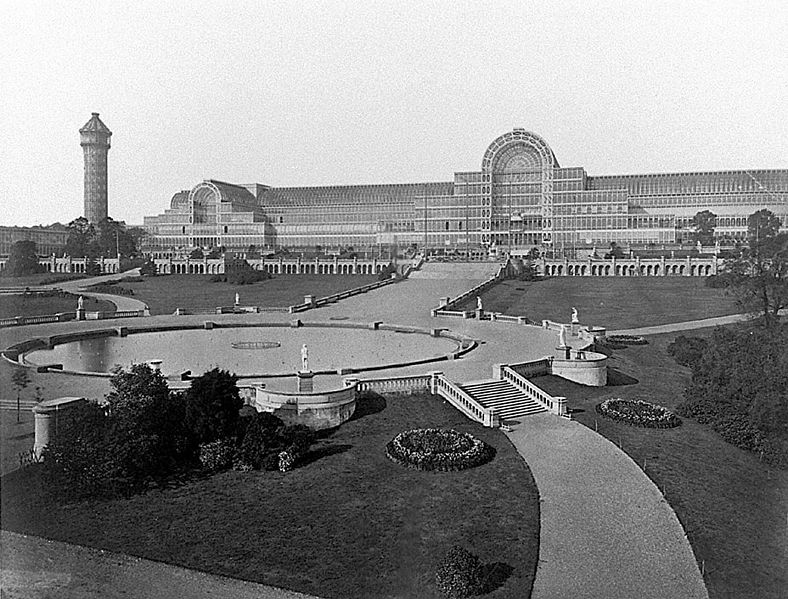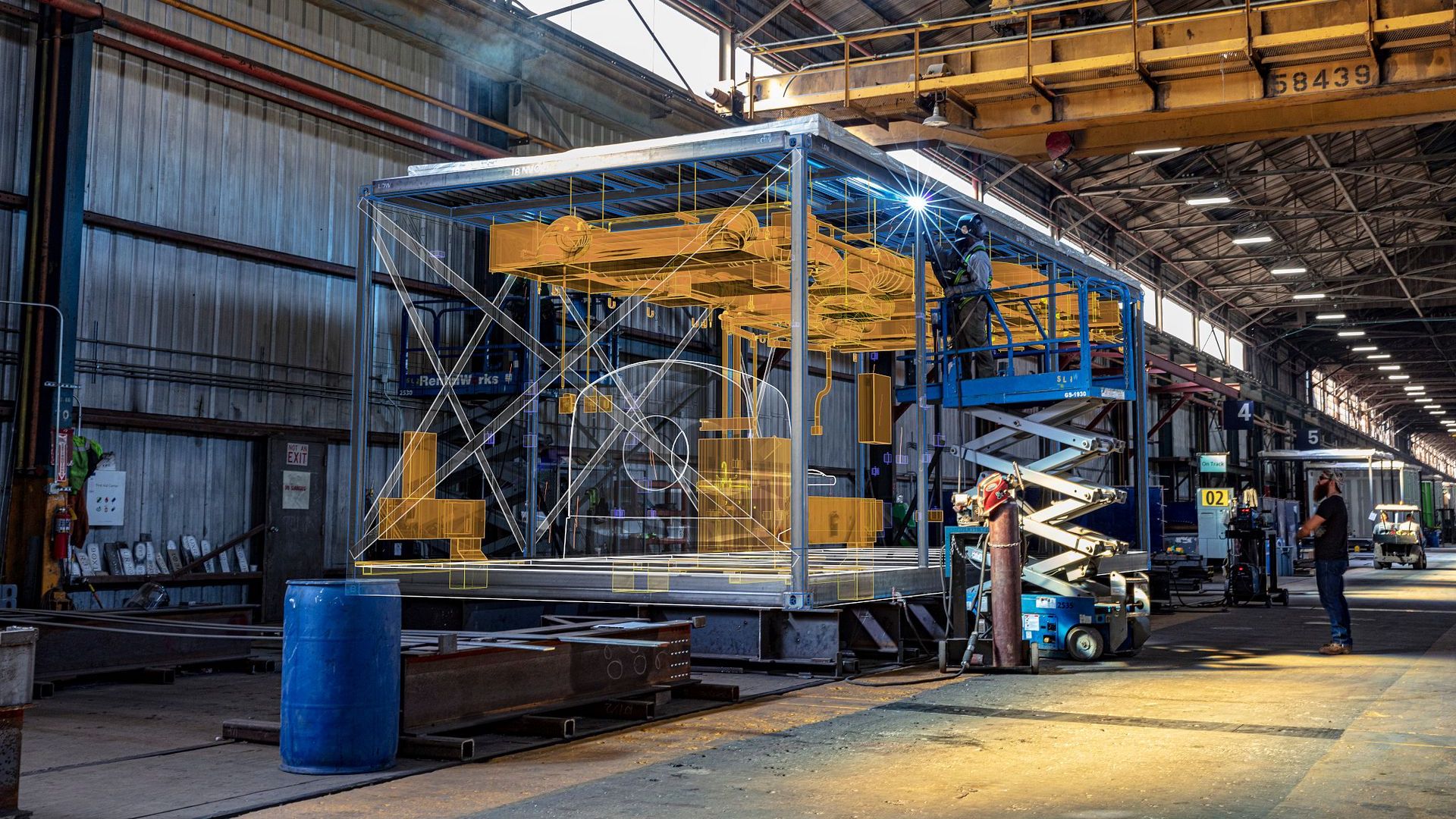Since the days we sat on the kitchen floor and played with Tinker Toys while our parents cooked, the appeal of prefabrication has been obvious. The limited number of parts–colored sticks of different lengths, wooden wheels with multiple sockets–created endless possibilities with minimal extra work.
Ask yourself, though: How many of us children would have played with such toys if we first had to shave and round those sticks, paint them or boreholes in the shaped wooden wheels? If you answered not many to none, you’re correct. And while we all like to think we’ve grown a bit in the last several decades, the basic tenets of construction are the same. One of these holds that reliable, streamlined and accessible parts make the building process go faster… plain and simple.
Enter prefabrication. This term, closely associated with offsite and modular construction, has been a buzzworthy trend in construction over the last few years. There are several good reasons for this, which we will explore today.
First, though, let’s do a brief dive into the history and definition of prefabrication. It’s important to note that while prefab is often subbed in for offsite and modular construction, it is nevertheless slightly different–a fact we’ll also address. From there, we’ll take a closer look at the benefits and trends currently making their mark on commercial and civil construction.
Let’s dive in below to learn more about what is prefabrication and how firms can get on board.
Time to Define Prefabrication
Jobsites are cramped, busy and often located in dense urban environments or sparse untouched rural areas, into and out of which travel is difficult. Getting materials and machinery in can be problematic, raising costs and lengthening timelines of construction projects big and small. Prefabrication is one possible–and promising–answer to reducing building costs and easing the construction process overall.
According to ECHOtape, prefabrication is the act of making buildings or building components in another location, presumably one better suited to construction. Once completed, construction companies transport them to the final site, where they complete setup and handoff buildings to their new owners. To sum it up, prefabrication is a process whereby structures are manufactured elsewhere but set up on-site.
Offsite construction is closely related, but a little different. The term involves the more broad aspect of planning and manufacturing buildings in another place. Offsite construction is agnostic as to how the components produced there eventually come together. They may be modular, manufactured or piecemeal.
For instance, manufactured housing refers to homes built elsewhere and delivered to a site. Modular housing refers to pieces of buildings manufactured offsite, then delivered for final installation and connection. Prefabrication can refer to both of these, as well as the manufacture of repeatable components (steel and timber frames or glass panels, for instance).
A Brief History of Prefab: Ancient England to Modern-Day Hospitality
While gaining buzz over the last few years, offsite construction is hardly a new concept. In fact, it has been around for thousands of years. The world’s oldest known engineered roadway–the Sweet Track–was constructed in England around 3,800 BCE using prefabricated timber sections that brought to the site rather than assembled there.
The Crystal Palace in London is another early example, made possible by large sheet glass prefabrication methods. With them, architects and builders created a fantastical, sweeping glass structure to house a global exhibition. While it was unfortunately destroyed later by fire, it is memorable for its trend-setting power.

Prefabrication has recently popped up in larger commercial projects as well, such as the Marriott Hotel’s groundbreaking 97-room Folsom Fairfield Inn & Suites in Folsom, California, whose guest rooms and bathrooms were constructed offsite. More recently, the company completed construction of its Pullman Courtyard Marriot with the help of prefab. The company proudly announces many more to come and sets the stage for other large companies to follow suit.
Prefabrication: Buzzworthy for a Reason
All signs point to prefabrication as being more than a passing trend. In some regions, modular construction has already gained steady popularity for residential construction.
Experts predict that modular construction will increase 6.1% globally by the year 2028, says the UA Builders Group. The trend has already taken off in a big way, they add, reporting that the shorter build times and greater cost-consciousness has already seen “84% of detached homes are built with prefabricated timber elements” in Sweden, while “US, Australia and UK are at 5%.” Moreover, “Third world countries are taking a closer look at prefab to meet their housing shortages and cost constraints.”
Therefore, it’s safe to say that prefabrication is already entrenched in the building sphere, and likely to stay there.
This isn’t only the case with wooden components and residential structures, however. In fact, prefabrication shows even more cost-cutting and time-saving promise in the commercial building sphere. Because commercial buildings frequently rely on repeating steel elements, prefabrication has the potential to make on-site assembly quicker, cheaper and easier. Same goes for glass panes, which frequently make up a huge amount of exterior surface area on skyscrapers, warehouses and apartment buildings.
Frankly, traditional on-site construction just isn’t sustainable to companies looking to grow and compete. That’s where prefabrication comes in.
How Prefabrication Works Today
In the modern age, prefabrication is an umbrella term referring to the practice of assembling a variety of structural components at a manufacturing site and transporting those sub-assemblies to the construction jobsite upon completion. It is most often used in reference to building and civil engineering, where prefabricated concrete and steel sections are repeated many times in the building plan.
Because that particular part or form is duplicated so often, it’s easier and more cost-effective to manufacture scores of them at once, rather than build them as needed on-site. Economies of scale dictate a lower cost per piece when made at a facility specifically designed to meet that need, not to mention bulk transportation that saves on travel costs.

The increased construction productivity from preparing a structure fully then adding prefabbed pieces in large batches should not be discounted either. In fact, let’s turn our attention to those benefits now.
The Many Benefits of Prefabrication
It’s true that prefabrication means you lose some flexibility in the final design of a building. However, if implemented correctly, it holds massive benefits to commercial projects, contractors and stakeholders. Just a few of the benefits include:
- Mitigating the labor shortage: Contractors already have difficulty finding labor, but construction still needs to happen. When on-site construction proceeds piecemeal, it reduces labor productivity even further. Prefabrication, therefore, helps companies speed up timelines, make the most of the labor they have on-site, increase productivity and compete in the marketplace.
- Cost-effectiveness: Moving partial assemblies from a factory often costs less than moving pre-production resources to each site. Plus, as labor productivity rises, costs associated with personnel fall.
- Time savings: According to Brandt, “A modular building can go up as much as 50% faster than traditional construction, taking a project from conception to completion quickly and easily—reaching that coveted return on investment fast.” This is especially important on heavy civil projects that can be very weather-dependent. When you’re racing a rainy season, time is of the essence and prefabrication can help you maintain tighter timelines/
- Quality control: When compared to repeated construction on-site, factory tools can offer added quality assurance. Moreover, the consistent indoor environments of factories eliminate most impacts of weather on production, while the streamlined manufacture and assembly processes improve jobsite safety on the whole.
- Lower environmental impact: Constructing pieces quickly offsite results in reduced pollution and disturbance of jobsites. This protects nearby wetlands or protected areas and minimizes disruption of local flora and fauna. The controlled, dry environment of modular construction saves on water usage and enables the recycling of scraps and other materials. Plus, with less on-site traffic and streamlined transportation, fossil fuel consumption plummets.
- Better safety and security: By reducing the timeframe of a construction-site, you concurrently reduce the amount of time that site is vulnerable to vandalism or theft. Because prefab, modular or manufactured pieces arrive in much larger “chunks,” the building itself goes up faster, and you can secure it that much sooner.
Today, these benefits are driving enormous interest in prefabrication as a tool for streamlining construction and saving companies money. Stakeholders, contractors, managers and laborers all face simpler work timelines and requirements, driving further innovation in the field.
Trends Impacting Prefabrication
Right now, several trends show significant promise in enabling contractors to embrace prefabrication, two in particular.
The first is BIM, or building information modeling. This allows designers to visualize the whole lifecycle of a building, from groundbreaking to daily use. Prefabrication further enables designers, architects and buildings to understand the intent and use of any structure.
Watch more:
Lean construction also plays nice with prefab. With the goal of reducing time, materials and labor through innovative technologies and strong communication between stakeholders and teams, lean construction is paving the way toward a greener, more productive future. As prefab structures are inherently lean, we can all look forward to the possibilities brought about by their marriage.
Modular Goes Big Time: Brands You Know and Love Are Jumping Onboard
Prefabrication is far from esoteric or theoretical these days. We’ve already discussed the Marriott’s success in their Folsom Fairfield Inn & Suites, but that’s not the only name you’ll recognize in the following list.
Google has jumped on board modular building techniques, grabbing this strategy for their future products due to its efficiency and cost-effectiveness. Their rationale? Google loves to innovate, and modular structures enable endless opportunities when it comes to redesigning their site over time.
Yale has also availed itself of prefabricated construction in recent years. In order to provide temporary space during construction of new campus buildings, the university employed modular spaces for the Political Science department. The result was room to teach and research while construction occurred, reducing disruption of academic life. Prefabrication, they’ve shown, continues to present opportunity on a temporary basis.
Read more: How Industrialized Construction Renews Modular Power Solutions’ Business Certainty
Who doesn’t love a good drive-through? Starbucks and McDonald’s have both turned their designers to creating small, intensive-use buildings that rely on pop-up construction methods to save time and money. They point toward a future in which cheap and easy solutions for living spaces, commercial buildings and office buildings will abound.
Jump on the Bandwagon: Time to Embrace Fabrication
From Tinker Toys to teaching college students, prefabrication’s possibilities would seem to be endless. Whether using prefabrication for just a section of a new project, or the vast majority, the benefits are undeniable. Over time, as builders combine this burgeoning approach with new and innovative methods, we are bound to see even more productivity and cost savings. For now, it’s time to jump on board before you’re left behind.
If you're interested in learning more about prefabrication in action, watch our on-demand webinar, “Reimagining a Life Sciences Manufacturing Facility Using Industrialized Construction,” here.



